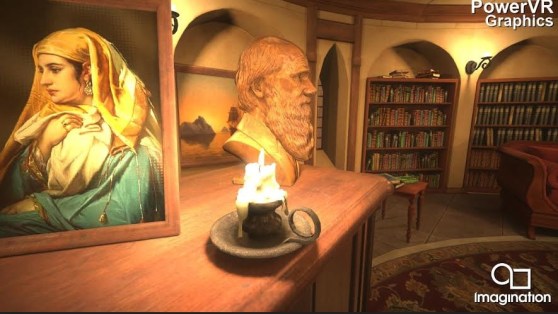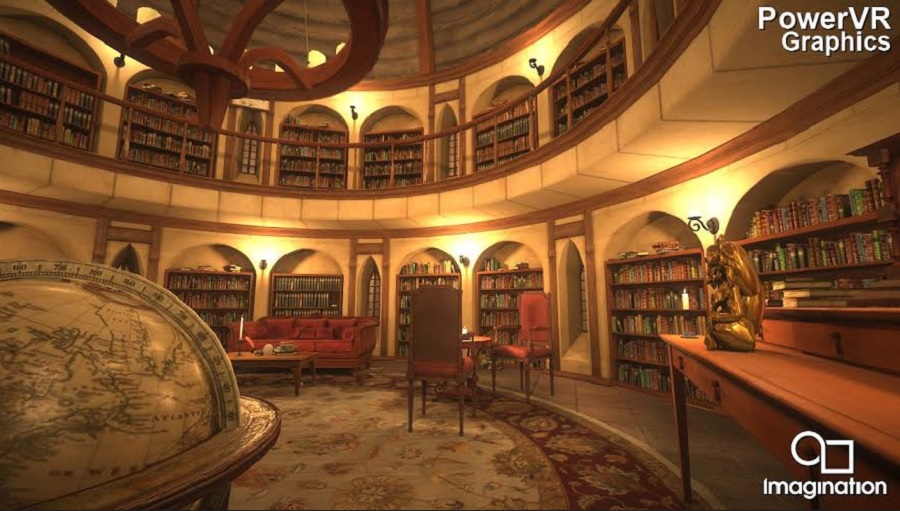The graphics in digital gadgets, from wearables to smart TVs, are about to get more snappy and responsive.
Imagination Technologies is launching its latest graphics cores that can be licensed by chip vendors to build full graphics chips. The London company says that these new cores offer a 60 percent improvement in performance, ranging from 20 gigaflops at the low end to 1.5 teraflops at the high end, compared to the previous generation.
The new PowerVR Series 7XT and PowerVR Series 7XE graphics processing units (GPUs) can handle graphics processing for a wide range of devices, including next-generation smartphones and tablets running Android 5.0 (Lollipop version), smart TVs, set-top boxes, wearables, or automotive electronics.
At the high end, the Series 7XT GPUs can offer up to 512 cores for arithmetic processing on a single, power-efficient chip. Those GPUs could be used in next-generation servers or 3D gaming consoles. Meanwhile, the Series 7XE GPUs are highly configurable for entry-level devices. The Series 7XE sports either 16 or 32 cores, or brains..
Both offer support for hardware virtualization and multi-domain security. The Series 7 chips use the latest PowerVR Rogue GPU architecture. By making it configurable, the company can pitch the GPUs at a huge range of products, including Internet of things devices, or everyday objects that connect to the Internet.
It has features such as hardware tessellation, geometry shaders, power management, and compression technology.
“With graphics-enabled devices entering all aspects of everyday life, it is no longer possible to offer just point solutions. Each new generation requires a wavefront of GPUs from low to high end, to address the broad spectrum of applications,” said Tony King-Smith, the executive vice president of marketing at Imagination, in a statement. “With PowerVR Series 7, we have not only honed our architecture but also our IP support with tools such as our Design Optimization Kits for rapid physical and performance optimization. These allow our partners to choose right-sized solutions based on the optimum balance of power, performance and area for every segment.”
For non-graphics parallel computing tasks, the GPUs can reach 300 percent better performance.
“With PowerVR Series 7, Imagination is offering advanced new features such as hardware tessellation that will enable the company to make aggressive inroads into a broad range of new markets,” said Jon Peddie, a graphics expert and president of Jon Peddie Research, said in a statement. “With virtualization in the new cores, Imagination is looking beyond providing powerful graphics and compute performance toward providing even more value in helping to secure their customers’ system on chips.”
The new cores are available for licensing to chip vendors now.



